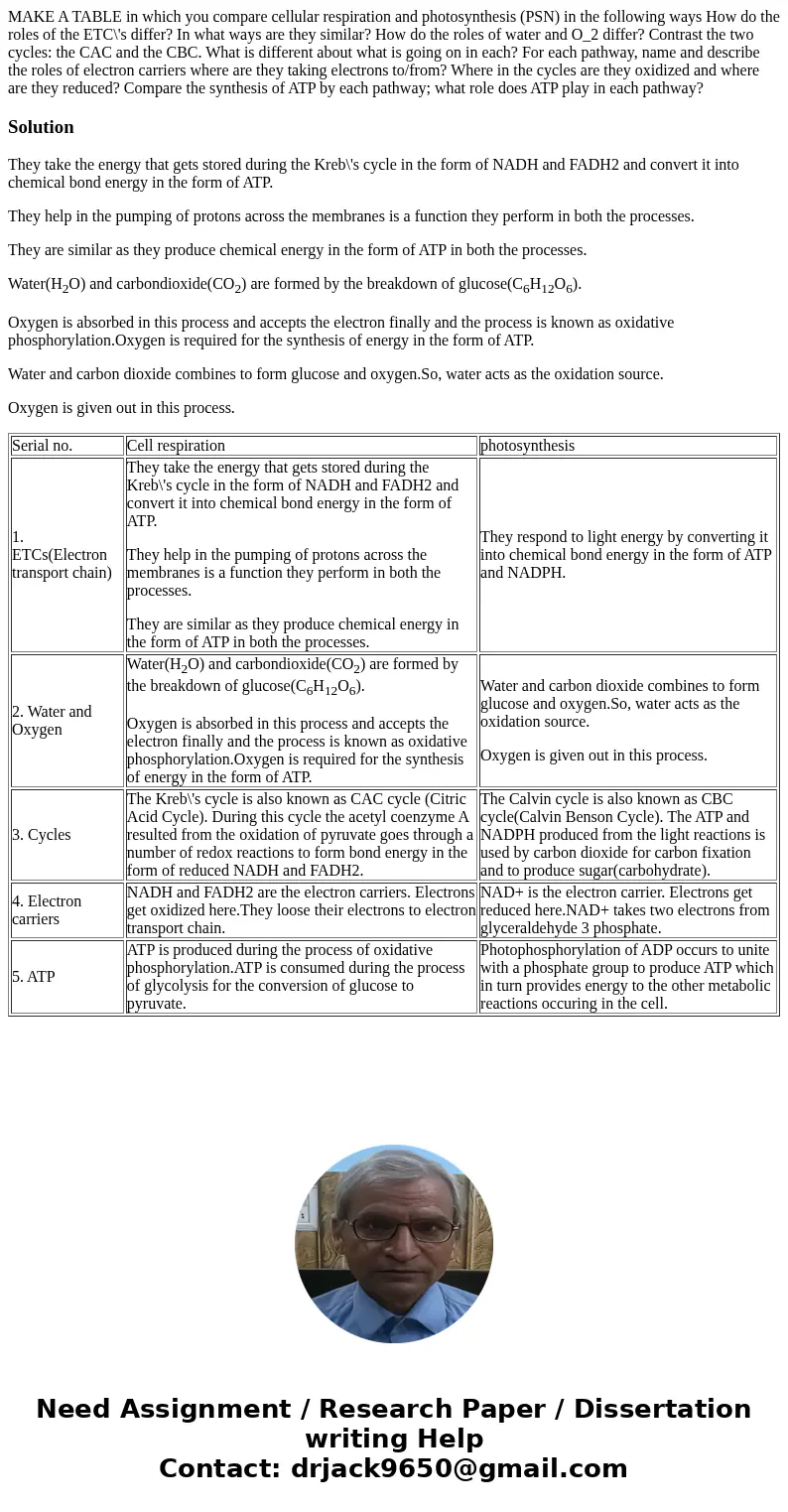MAKE A TABLE in which you compare cellular respiration and p
Solution
They take the energy that gets stored during the Kreb\'s cycle in the form of NADH and FADH2 and convert it into chemical bond energy in the form of ATP.
They help in the pumping of protons across the membranes is a function they perform in both the processes.
They are similar as they produce chemical energy in the form of ATP in both the processes.
Water(H2O) and carbondioxide(CO2) are formed by the breakdown of glucose(C6H12O6).
Oxygen is absorbed in this process and accepts the electron finally and the process is known as oxidative phosphorylation.Oxygen is required for the synthesis of energy in the form of ATP.
Water and carbon dioxide combines to form glucose and oxygen.So, water acts as the oxidation source.
Oxygen is given out in this process.
| Serial no. | Cell respiration | photosynthesis |
| 1. ETCs(Electron transport chain) | They take the energy that gets stored during the Kreb\'s cycle in the form of NADH and FADH2 and convert it into chemical bond energy in the form of ATP. They help in the pumping of protons across the membranes is a function they perform in both the processes. They are similar as they produce chemical energy in the form of ATP in both the processes. | They respond to light energy by converting it into chemical bond energy in the form of ATP and NADPH. |
| 2. Water and Oxygen | Water(H2O) and carbondioxide(CO2) are formed by the breakdown of glucose(C6H12O6). Oxygen is absorbed in this process and accepts the electron finally and the process is known as oxidative phosphorylation.Oxygen is required for the synthesis of energy in the form of ATP. | Water and carbon dioxide combines to form glucose and oxygen.So, water acts as the oxidation source. Oxygen is given out in this process. |
| 3. Cycles | The Kreb\'s cycle is also known as CAC cycle (Citric Acid Cycle). During this cycle the acetyl coenzyme A resulted from the oxidation of pyruvate goes through a number of redox reactions to form bond energy in the form of reduced NADH and FADH2. | The Calvin cycle is also known as CBC cycle(Calvin Benson Cycle). The ATP and NADPH produced from the light reactions is used by carbon dioxide for carbon fixation and to produce sugar(carbohydrate). |
| 4. Electron carriers | NADH and FADH2 are the electron carriers. Electrons get oxidized here.They loose their electrons to electron transport chain. | NAD+ is the electron carrier. Electrons get reduced here.NAD+ takes two electrons from glyceraldehyde 3 phosphate. |
| 5. ATP | ATP is produced during the process of oxidative phosphorylation.ATP is consumed during the process of glycolysis for the conversion of glucose to pyruvate. | Photophosphorylation of ADP occurs to unite with a phosphate group to produce ATP which in turn provides energy to the other metabolic reactions occuring in the cell. |

 Homework Sourse
Homework Sourse